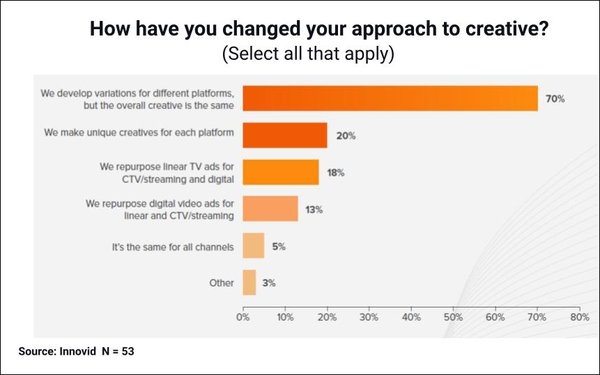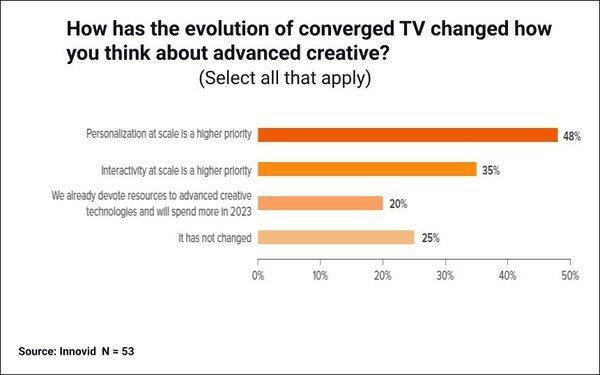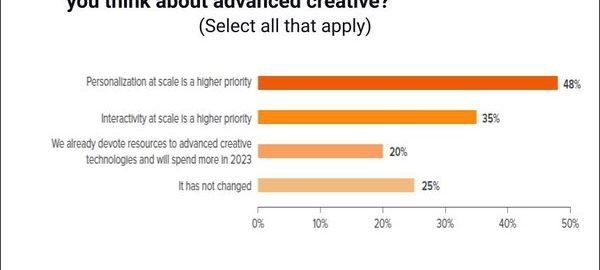Ad Creative Still Mostly Fails To Leverage Converged TV’s Targeting Capabilities

The targeting capabilities of advanced/converged TV should be a boon to advertising effectiveness. But most of the ad creative out there now still isn’t capable of exploiting those capabilities.
Seventy percent of 53 senior brand advertising executives recently surveyed by Innovid reported that while they develop some kind of variations for different platforms, the overall creative for campaigns is basically the same.
Just 20% reported producing unique messaging for each platform, and roughly the same numbers reported either repurposing linear TV ads for connected TV and digital, or repurposing digital video ads for linear/CTV. (Chart above.)
In most cases, respondents said the creative effort still starts with a central “big idea” that’s conveyed as a 30- or 60-second spot, even though the output is destined for platforms that enable tailored formats and personalization.
“While the ‘big idea’ approach can work well between linear and CTV, which can share the lean-back viewing behavior of the big screen, a number of marketers stated that they [simply] put their digital video ads in rotation when they advertise on CTV/streaming,” notes Innovid.
Brands that already take a digital approach to their marketing mixes or have more digital-friendly audiences — and are accustomed to using tech like dynamic creative optimization and interactive tools — were found to be more apt to produce more personalized and interactive creative specific to each distribution vehicle.
But in advanced TV, the costs involved in producing multiple video ads, and the complication of trying to determine how many variations will drive a positive ROI, are major hang-ups.
One marketer said that despite not having invested in linear TV in over five years, their agency still starts by presenting a video reel of the idea. The team then has to take that idea and make sure it works on the big screen in conjunction with how it’s retooled for digital platforms.
“We consider CTV/streaming to be another form of digital video,” said a vice president of digital marketing for a multichannel retailer. “YouTube remains a platform on its own. Pinterest has been successful in offering integrated shopping units with commerce feeds and more granular audience targeting, similar to others. TikTok launched several new formats recently that they are testing; they’re all playing around with new and unique creative units so that brand marketers can run better-performing full-funnel campaigns within their platforms.”
The encouraging news is that 48% of respondents said that they plan to devote more resources to new creative executions that incorporate personalization and 35% plan to prioritize interactivity at scale, in the coming year.

“In a marketing environment that continues the march toward automated and obfuscated [media] offerings, creative is the largest lever you can still pull,” commented a vice president for an online retailer. “Developing in-house creative production, cross-training brand and performance marketers, and building omnichannel creative playbooks with clear business outcomes are crucial.”
The survey’s respondents were drawn from senior executives who are members of the Ascendant Network’s digital and retail communities.
(10)
Report Post





